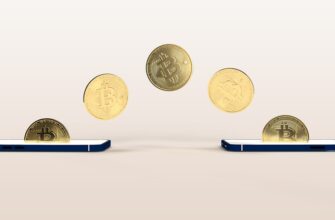What Is P2P Rate for USDT and Why Does It Matter?
Peer-to-peer (P2P) rate for USDT refers to the exchange value users get when trading Tether (USDT) directly with other individuals, bypassing centralized exchanges. Unlike fixed platform rates, P2P rates fluctuate based on supply, demand, and negotiation. This decentralized approach often offers competitive pricing, lower fees, and flexible payment methods—making it crucial for traders seeking optimal value in volatile crypto markets.
Key Factors Influencing P2P Rates for USDT
Several variables impact P2P USDT rates:
- Market Volatility: Sudden Bitcoin price swings often cause USDT demand spikes, raising P2P rates.
- Geographical Demand: Regions with limited banking access (e.g., Africa, Latin America) frequently see higher rates due to USDT’s use as a dollar proxy.
- Payment Method: Bank transfers typically offer better rates than cash or e-wallets due to lower fraud risk.
- Trader Reputation: Verified sellers with high completion rates command premium rates.
- Regulatory Climate: Countries with strict capital controls often have elevated P2P USDT rates.
How to Secure the Best P2P Rate for USDT: 5 Pro Tips
- Compare Multiple Platforms: Use Binance P2P, Paxful, or LocalBitcoins to benchmark rates across 5+ sellers before transacting.
- Time Your Trades: Rates dip during low-activity hours (e.g., 3-6 AM GMT). Track historical trends via CoinGecko.
- Leverage Bulk Deals: Sellers often offer 0.5-2% better rates for $1,000+ transactions.
- Build Seller Relationships: Repeat deals with trusted partners unlock preferential pricing.
- Use Limit Orders: Set your desired rate on P2P exchanges to automatically match with buyers/sellers.
Benefits of P2P USDT Trading Beyond Rates
While competitive P2P rates for USDT attract users, additional advantages include:
- Lower Fees: Avoid 0.1-0.6% exchange charges; P2P fees average 0.1-0.3%.
- Payment Flexibility: Transact via PayPal, Venmo, or local bank networks unavailable on centralized platforms.
- Faster Settlements: Direct transfers clear in minutes versus exchange withdrawal delays.
- Privacy Control: Minimize KYC requirements through selective seller verification.
Managing P2P USDT Trading Risks
Despite advantages, P2P carries unique risks. Mitigate them with these strategies:
- Escrow Scams: Only trade on platforms with bonded escrow. Confirm funds release after payment receipt.
- Payment Reversals: Avoid reversible methods like PayPal “Goods and Services.” Use final transfers (e.g., bank wires, crypto).
- Rate Manipulation: Verify rate legitimacy by cross-checking with live USDT/USD spreads on CoinMarketCap.
- Regulatory Uncertainty: Stay updated on local crypto laws via resources like CoinTelegraph’s policy tracker.
FAQ: P2P Rate for USDT Explained
Q1: Why is the P2P rate for USDT different from exchange rates?
A: P2P rates reflect individual negotiations and regional demand, while exchanges use algorithmic order books. P2P often offers 1-5% better rates in emerging markets.
Q2: Is a higher or lower P2P rate better when selling USDT?
A: Higher rates benefit sellers (more local currency per USDT), while buyers seek lower rates. Always compare against market averages.
Q3: Can I negotiate P2P USDT rates?
A: Yes! Many platforms allow rate bidding. Propose a 0.5-1% adjustment from listed prices—experienced sellers often accept reasonable offers.
Q4: How often do P2P rates for USDT change?
A: Rates update continuously based on trader activity. Monitor platforms in real-time during high-volatility events like Fed rate announcements.
Q5: Are P2P USDT rates legal?
A: Legality depends on local regulations. In most countries, P2P trading is permitted, but tax reporting is mandatory. Consult a crypto tax specialist for compliance.
Mastering P2P rates for USDT empowers you to maximize returns while leveraging blockchain’s decentralized potential. Stay informed, prioritize security, and trade strategically.








